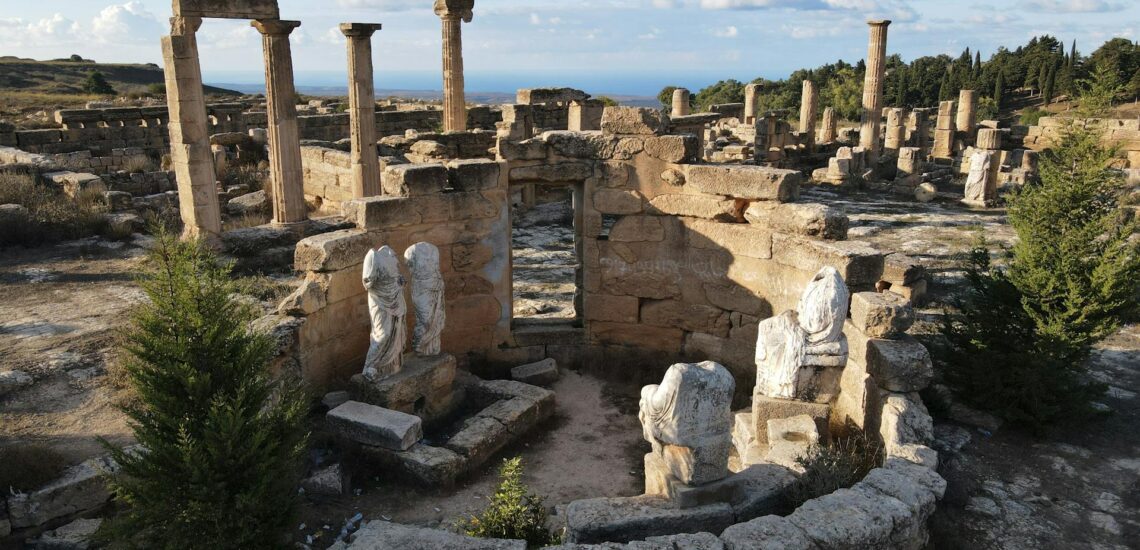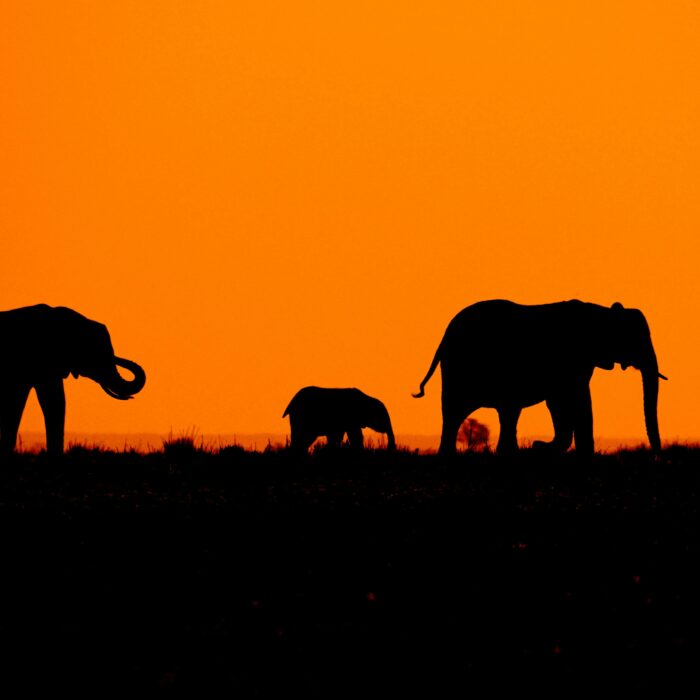Quick facts about Libya:
- Population: Approximately 7 million people.
- Capital: Tripoli.
- Largest City: Tripoli.
- Official Language: Arabic.
- Other Languages: Berber languages, Italian, and English are also spoken.
- Currency: Libyan Dinar (LYD).
- Government: Provisional unity government (subject to change due to ongoing conflicts and political instability).
- Major Religion: Islam, predominantly Sunni.
- Geography: Located in North Africa, bordered by the Mediterranean Sea to the north, Egypt to the east, Sudan to the southeast, Chad and Niger to the south, and Algeria and Tunisia to the west.
Fact 1: Libya is 90% desert
Libya is predominantly desert, with approximately 90% of its territory covered by the expansive Sahara Desert. This vast arid landscape dominates the country, characterized by its sand dunes, rocky plateaus, and sparse vegetation.
The Libyan Desert, part of the greater Sahara, includes some of the most inhospitable regions on Earth. It features dramatic geological formations such as the Ubari Sand Sea with its striking dune fields and the Acacus Mountains known for ancient rock art. The desert’s extreme conditions—intense heat during the day, frigid nights, and minimal rainfall—create a challenging environment for life.
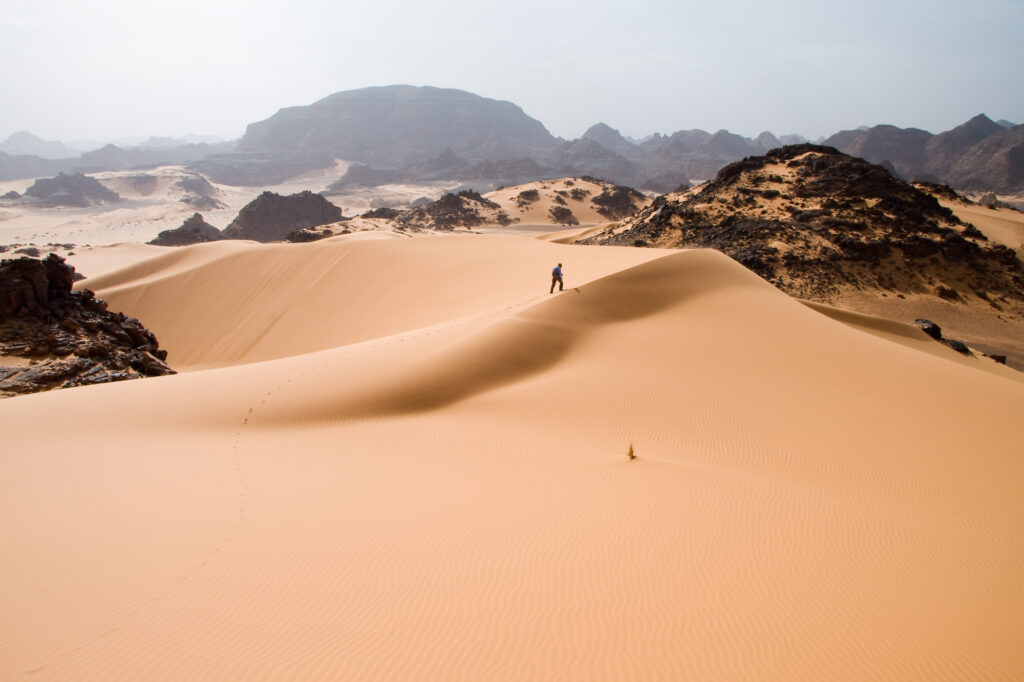
Fact 2: Libya has one of the largest oil and gas reserves of any country in Africa
Libya boasts some of the largest oil and gas reserves in Africa, which play a critical role in the country’s economy and its standing in the global energy market. Here are some key points about Libya’s oil and gas reserves:
- Oil Reserves: Libya has proven oil reserves estimated at around 48.4 billion barrels, making it the largest oil reserve holder in Africa and among the top ten globally. These reserves are concentrated primarily in the Sirte Basin, which accounts for the majority of the country’s production.
- Natural Gas Reserves: In addition to its substantial oil reserves, Libya also possesses significant natural gas reserves, estimated at about 54.6 trillion cubic feet. These reserves are mostly found in the western and eastern parts of the country, with key production areas including the Wafa and Bahr Essalam fields.
- Production and Export: Libya’s oil and gas sector is a cornerstone of its economy, accounting for a substantial portion of its GDP and government revenues. The country exports the majority of its oil and gas, primarily to European markets. Key export terminals include the ports of Es Sider, Ras Lanuf, and Zawiya.
Fact 3: There was a very ambitious water project in Libya
Libya’s Great Man-Made River (GMMR) project stands as one of the most ambitious water engineering feats in history. This colossal endeavor aimed to tackle the country’s acute water scarcity by extracting vast amounts of groundwater from the Nubian Sandstone Aquifer System, located deep beneath the Sahara Desert. The project’s goal was to transport this precious resource through an extensive network of pipelines, spanning over 4,000 kilometers, to Libya’s populous coastal cities such as Tripoli, Benghazi, and Sirte.
Initiated in the 1980s, the GMMR project has been executed in several phases, with the first phase completed in 1991. The system has dramatically transformed the country’s water supply, enabling agricultural development in previously barren desert areas and providing a reliable source of water for urban centers. This has significantly improved living standards for millions of Libyans, highlighting the project’s profound economic and social impact.
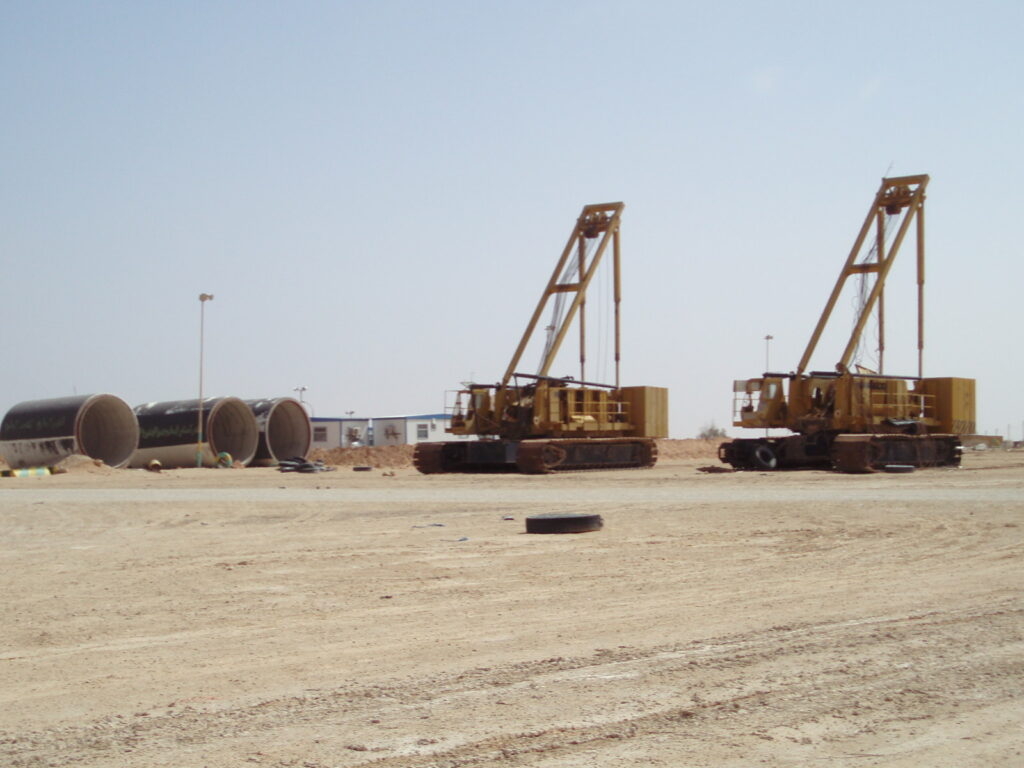
Fact 4: Muammar Gaddafi Libyan leader killed by protesters
Muammar Gaddafi, the long-time leader of Libya, was killed by rebel forces during the Libyan Civil War on October 20, 2011. Gaddafi had ruled Libya for over four decades since he came to power in a coup in 1969, establishing an authoritarian regime characterized by strict control over political life, media, and the economy.
In 2011, inspired by the Arab Spring uprisings that swept across the Middle East and North Africa, protests erupted in Libya against Gaddafi’s rule. The situation quickly escalated into a full-scale civil war between Gaddafi’s loyalist forces and rebel groups. NATO intervened in the conflict, conducting airstrikes against Gaddafi’s military assets under a United Nations mandate to protect civilians.
After months of intense fighting, Gaddafi’s stronghold in the capital, Tripoli, fell to the rebels in August 2011. Gaddafi fled to his hometown of Sirte, where he continued to resist the rebel forces. On October 20, 2011, Gaddafi was captured by fighters from the National Transitional Council (NTC) as he attempted to flee Sirte. He was subsequently killed under controversial circumstances, marking the end of his 42-year rule.
Fact 5: The territories of Libya were part of ancient empires
During antiquity, Libya was influenced and controlled by various powerful civilizations, which shaped its development and heritage.
In the 7th century BCE, the Phoenicians established settlements along the Libyan coast, the most notable being Carthage in what is now Tunisia. These settlements later became part of the Carthaginian Empire, known for its formidable navy and commercial prowess across the Mediterranean. The city of Leptis Magna, located in present-day Libya, became a major center of commerce and culture under Carthaginian rule.
Following the Punic Wars, which culminated in the destruction of Carthage in 146 BCE, the territories of Libya fell under Roman control. The Romans significantly developed the region, particularly the cities of Leptis Magna, Sabratha, and Oea (modern-day Tripoli). These cities flourished under Roman rule, becoming important centers of trade, culture, and governance. Leptis Magna, in particular, is renowned for its impressive ruins, including a large amphitheater, basilica, and triumphal arch, showcasing Roman architectural and engineering prowess.
After the decline of the Roman Empire, the region came under the influence of the Byzantine Empire. During the Byzantine period, many Roman structures were preserved and repurposed, and new Christian churches and fortifications were built. The Byzantines controlled Libya until the Arab Islamic expansion in the 7th century CE, which brought significant cultural and religious changes to the region.
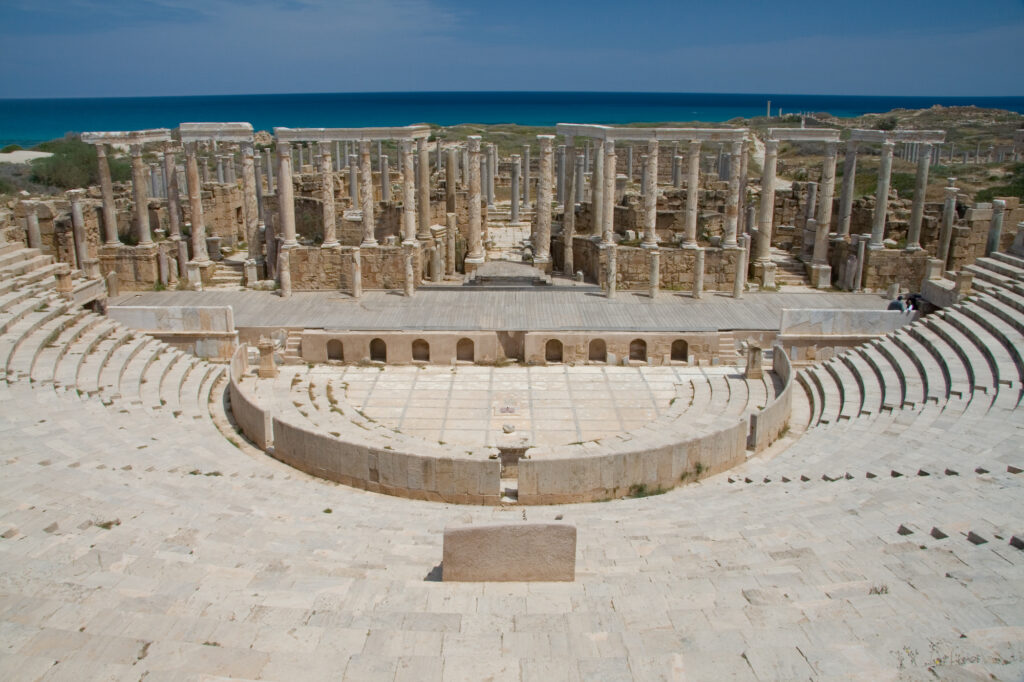
Fact 6: Libya relies on food imports
Libya relies heavily on food imports due to its arid climate and desert terrain, which make large-scale agriculture difficult. With around 90% of the country covered by the Sahara Desert, there is very little arable land, and water scarcity remains a significant challenge despite efforts like the Great Man-Made River project.
The country’s economy, historically dependent on oil exports, has led to underinvestment in agriculture. Political instability since the fall of Muammar Gaddafi in 2011 has further disrupted agricultural production and supply chains. Rapid urbanization and population growth have increased the demand for food, widening the gap between domestic production and consumption.
Fact 7: Libya has 5 UNESCO World Heritage sites
These sites span various periods and civilizations, showcasing Libya’s significance in the ancient and medieval worlds.
- Archaeological Site of Cyrene: Founded by Greek settlers in the 7th century BCE, Cyrene became one of the principal cities in the Hellenic world. Located near the modern town of Shahhat, the site features impressive ruins, including temples, a necropolis, and a well-preserved theater, illustrating the city’s grandeur and its role as a center of learning and culture.
- Archaeological Site of Leptis Magna: One of the most spectacular Roman cities in the Mediterranean, Leptis Magna is renowned for its well-preserved ruins. Located near the modern city of Al Khums, the site includes a magnificent amphitheater, a basilica, and the Arch of Septimius Severus, highlighting the city’s importance as a major trade and administrative center during the Roman Empire.
- Archaeological Site of Sabratha: Another significant Roman site, Sabratha, located west of Tripoli, features stunning ruins overlooking the Mediterranean Sea. The city was an important Phoenician trading post before becoming a flourishing Roman city. Key highlights include the theater, various temples, and beautiful mosaics.
- Rock-Art Sites of Tadrart Acacus: Situated in the Acacus Mountains in the Sahara Desert, these sites contain thousands of rock carvings and paintings dating back to 12,000 BCE. The artwork depicts various scenes, including animals, human activities, and ceremonial practices, providing invaluable insights into the prehistoric cultures of the region.
- Old Town of Ghadamès: Often referred to as the “Pearl of the Desert,” Ghadamès is an ancient oasis town located in the northwestern part of Libya. The old town features traditional mud-brick architecture, with covered alleyways and multi-story houses designed to combat the extreme desert climate. Ghadamès is one of the best-preserved examples of a traditional pre-Saharan settlement.

Note: If you decide to visit the country, pay attention to security. Also check if you need an International Driver’s License to drive in Libya.
Fact 8: There was once a king in Libya
Libya was ruled by King Idris I from 1951 until 1969. He was instrumental in Libya’s independence from Italian colonial rule and the subsequent establishment of the Kingdom of Libya. King Idris I belonged to the Senussi dynasty, a prominent Islamic political-religious order in North Africa.
In 1969, a coup d’état led by Muammar Gaddafi, then a young army officer, overthrew King Idris I’s regime. This marked the end of the monarchy in Libya.
Fact 9: There is an ancient volcano in a desert area in Libya
In the desert region of Libya, there exists an ancient volcanic field known as the Waw an Namus. This unique geological formation is located in the southeastern part of the country, within the Libyan Desert (part of the larger Sahara Desert). Waw an Namus is notable for its volcanic features, including a volcanic caldera surrounded by black basaltic lava flows and volcanic cones.
The centerpiece of Waw an Namus is the caldera, which contains a saltwater lake known as Umm al-Maa. This lake’s name translates to “Mother of Water” in Arabic, and it is a stark contrast to the surrounding arid desert landscape. The caldera is believed to have formed through volcanic activity millions of years ago, although the exact timing of its eruptions and subsequent evolution is still the subject of geological study.

Fact 10: Libya is still not a safe place for travelers
Libya remains highly unsafe for travelers due to ongoing political instability, armed conflicts between militias, and the presence of extremist groups. Kidnappings, terrorism, and random violence are significant risks. Civil unrest, protests, and demonstrations can escalate quickly. Infrastructure is severely impacted, affecting essential services. Most governments advise against all travel to Libya due to these serious security concerns. Travelers face extreme danger, and visiting historical or cultural sites is impractical and risky.

Published June 30, 2024 • 9m to read

